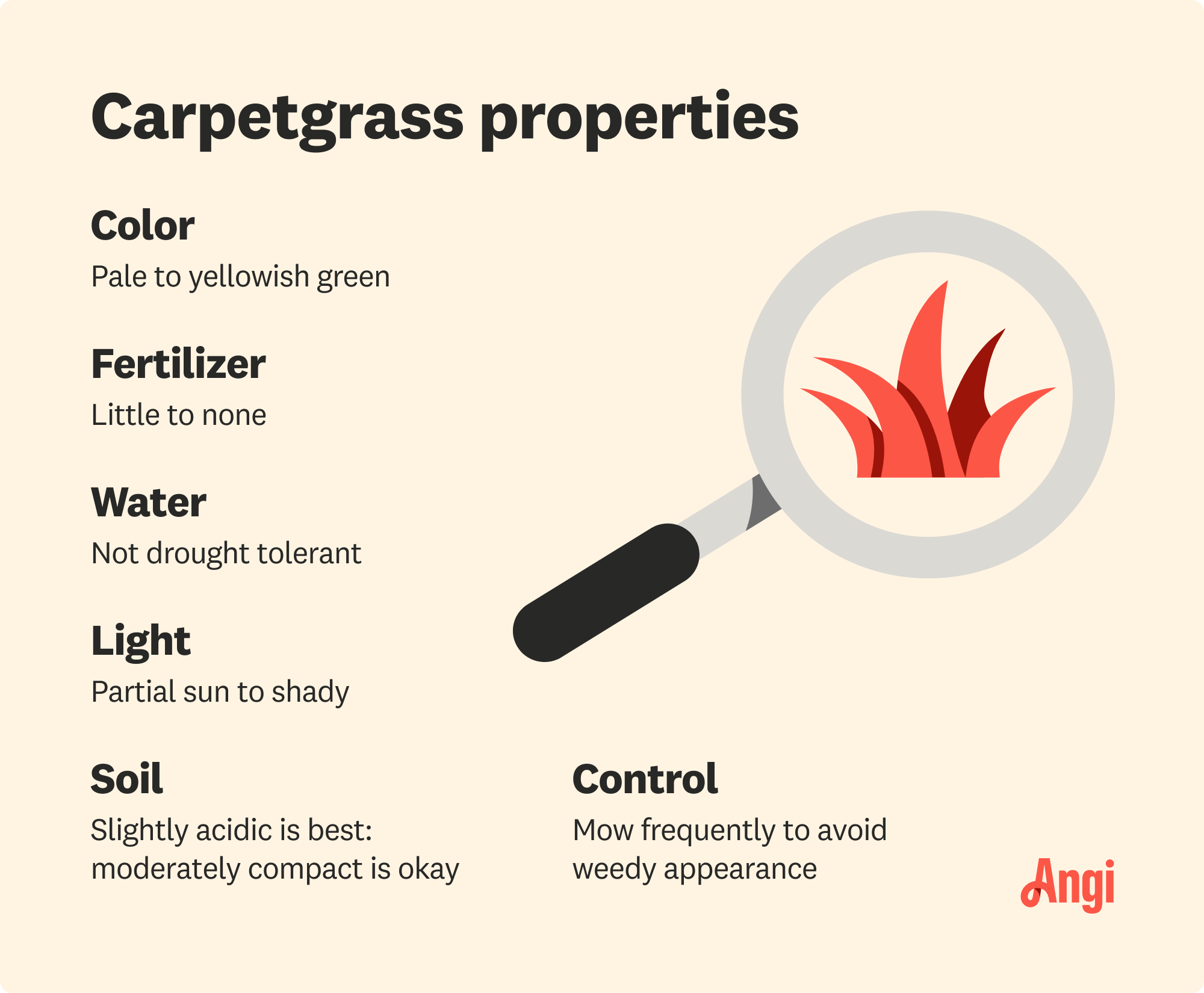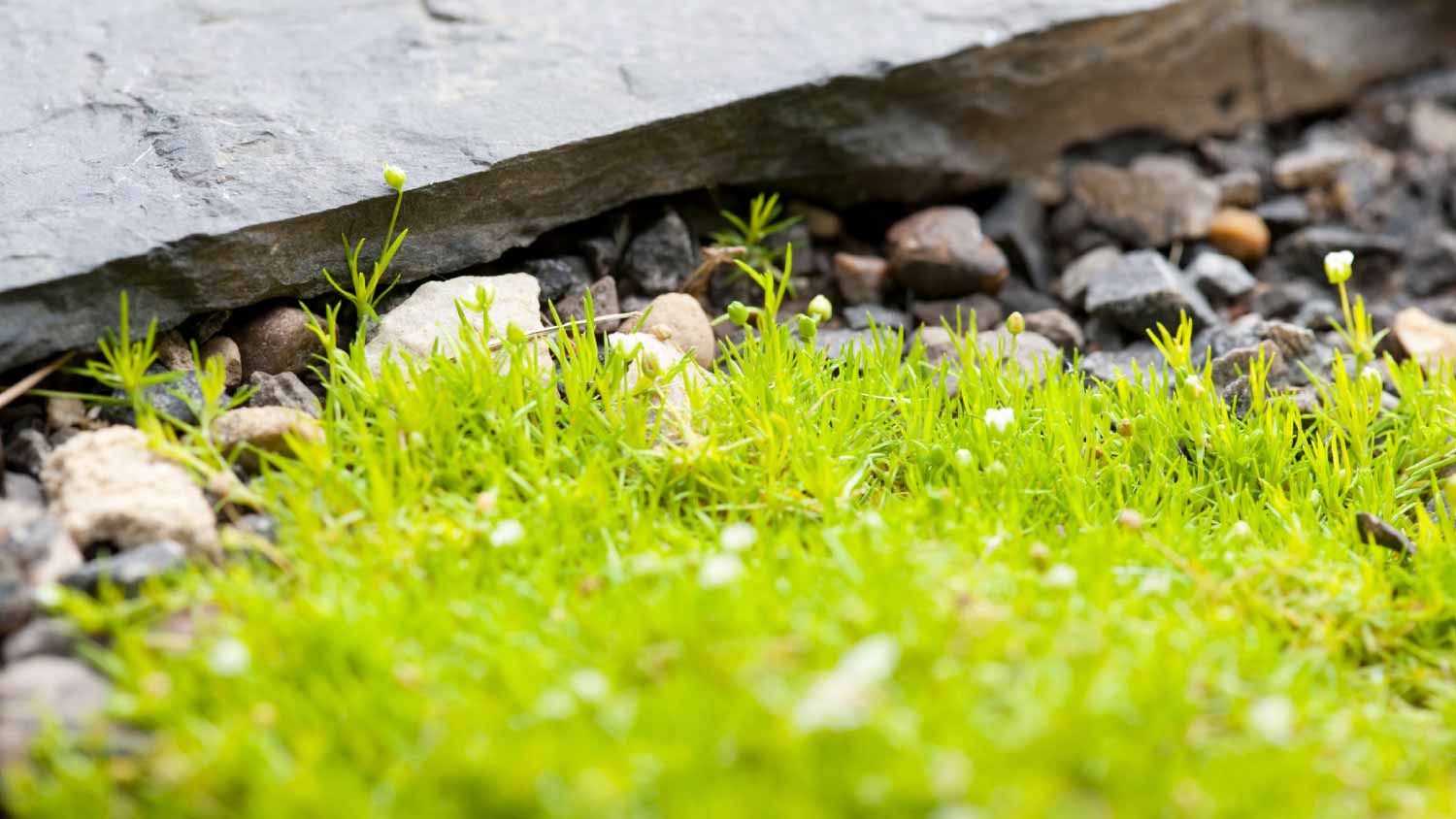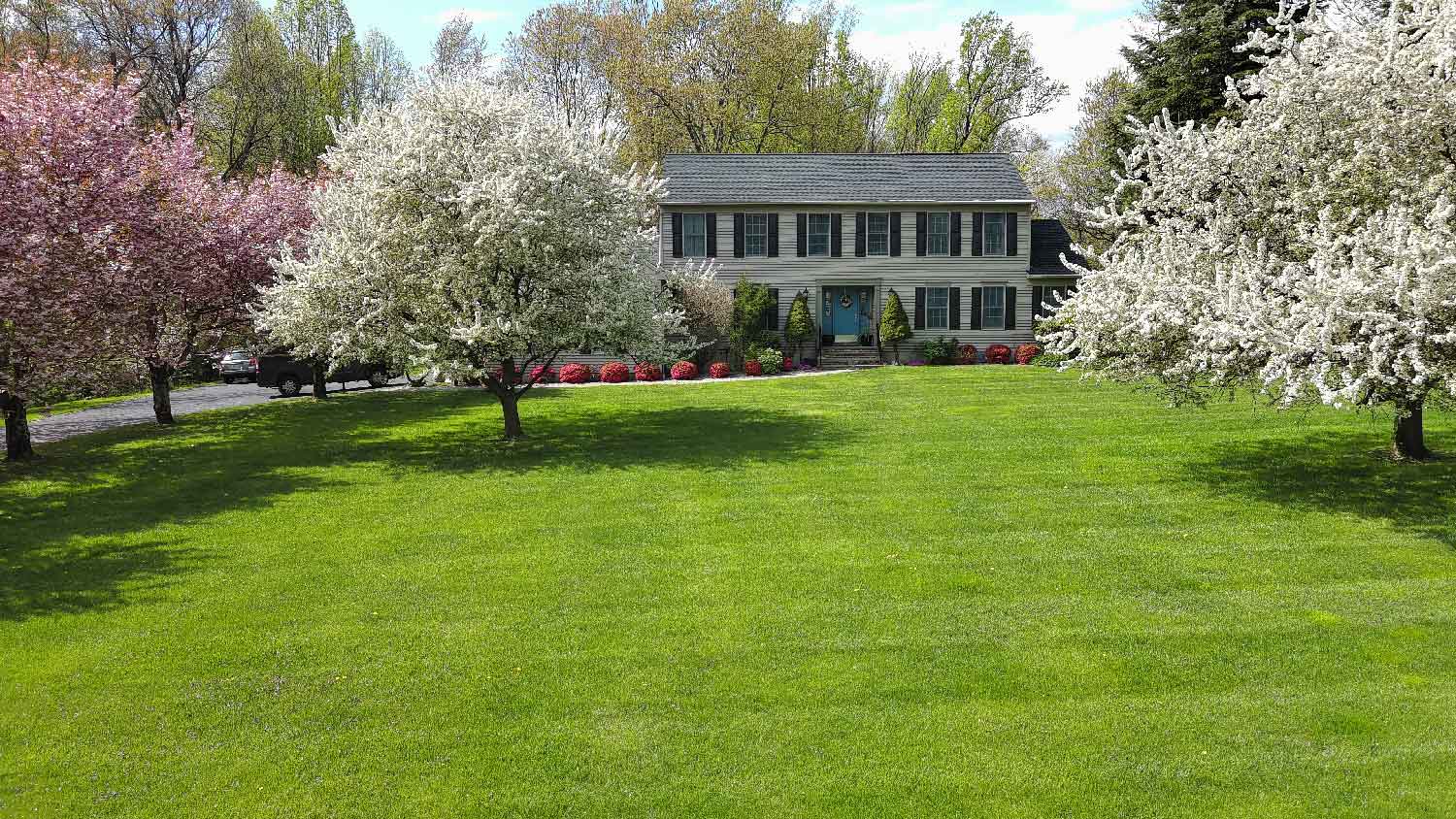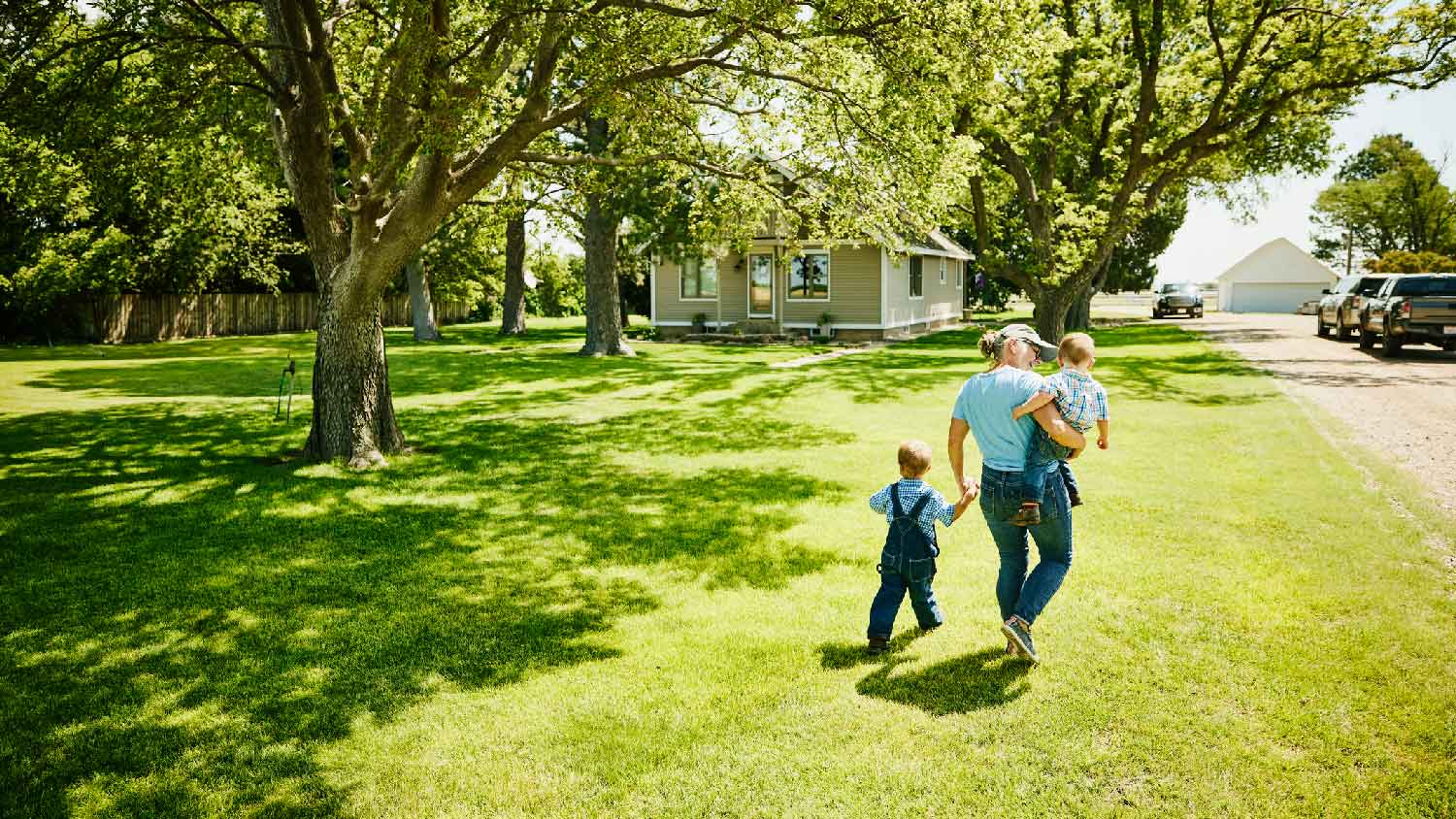What Is Carpetgrass and How Is It Used?
Carpetgrass provides function over beauty


Unlike many types of grass, carpetgrass will grow in acidic soils down to a pH of 4.
Low-nutrient, poor soils are no problem for carpetgrass.
Broadleaf and narrowleaf carpetgrass require little to no fertilizer.
Carpetgrass can’t tolerate drought or salty soils.
Whoever said that the grass is always greener on the other side obviously did not have much experience with carpetgrass. What is carpetgrass, exactly? You may not have ever heard of it, but chances are, you’ve seen it. And if you’re looking for a hardy turf grass, especially one that helps prevent soil erosion, then carpetgrass is a great option. Keep reading to learn all about carpetgrass and whether it’s the right grass for you.
What Is Carpetgrass?
Carpetgrass is a species of warm-season grass native to the Gulf Coast of the southern U.S. It’s a hardy variety that often survives where other species fail. For that reason, you’ll often find it planted in shady or relatively infertile areas.
Because carpetgrass is a warm-season grass originating from the hot, humid climate of the Gulf, it doesn’t typically respond well to cool temperatures. That means it’s usually among the last species of grass to green up in the spring and among the first to turn brown in late summer and fall.
| Carpetgrass Facts | Description |
|---|---|
| Botanical name | Axonopus fissifolius or Axonopus compressus |
| Common names | Broadleaf or Narrowleaf Carpetgrass |
| Plant type | Warm-season perennial grass |
| Height | 8–20 inches |
| Life cycle | Grows in late spring through late summer, becomes dormant in the winter |
| Soil type | Acidic, low-nutrient, but can grow in most soil types |
| Sun exposure | Full sun to moderate shade |
| Water | 1 inch per week |
| Hardiness zones | 7 to 10 |

What Is Carpetgrass?
Carpetgrass is a species of warm-season grass native to the Gulf Coast of the southern U.S. It’s a hardy variety that often survives where other species fail. For that reason, you’ll often find it planted in shady or relatively infertile areas.
Because carpetgrass is a warm-season grass originating from the hot, humid climate of the Gulf, it doesn’t typically respond well to cool temperatures. That means it’s usually among the last species of grass to green up in the spring and among the first to turn brown in late summer and fall.
What Does Carpetgrass Look Like?

Carpetgrass grows thicker blades with a pale or yellowish green color. It contrasts sharply with darker-green varieties like Kentucky bluegrass, but looks quite similar to turf like St. Augustine grass as long as it’s regularly cut.
When it’s not mowed regularly, carpetgrass quickly gives itself away with long, hairy seedheads that can grow up to a foot high within days. That’s why in areas where carpetgrass grows freely —southern parts of the U.S.—people often think of it as a weed or nuisance. But when maintained correctly, it can serve as a hardy turf grass.
Is Carpet Grass Good for Lawns?
Even though carpetgrass may not be the beauty queen of grasses, it has some important uses. For instance, if you’re looking to plant grass in an area where other grass species struggle, then carpetgrass may well be your best option. Since it’s so hardy, it will likely take root and germinate where other varieties can’t.
Carpetgrass is also superb as a tough, gripping turf grass. That means that if you need something to help prevent soil erosion in problem areas, then carpetgrass may provide the anchorage your lawn needs.
Pros and Cons of Carpetgrass
| Pros | Cons |
|---|---|
| Grows well in poor soil | Not drought or salt tolerant |
| Requires little to no fertilization | Lacks deep green color |
| Tolerates acidic soil | Susceptible to disease and pests |
Like most other types of lawn grasses, carpetgrass has excellent features that are handy for specific uses. Also, like other types, it has its downsides too. Here’s a look at the pros and cons of carpetgrass.
Carpetgrass Pros
Controls erosion on slopes
Grows well in soils that drain poorly
Requires little to no added fertilization
Grows thick to crowd out weeds
Grows well in shady locations
Tolerates acidic soils
Carpetgrass Cons
Not drought tolerant
Last to green up in spring and first to brown in fall
Lacks deep green color
Requires frequent mowing to avoid a weedy appearance
Not salt tolerant
Susceptible to damage from disease and pests
Types of Carpetgrass
Carpetgrass comes in two main varieties: broadleaf and narrowleaf. Narrowleaf carpetgrass is the most prevalent species, and its seeds are readily available in most lawn and garden centers.
Broadleaf
You may be familiar with broadleaf carpetgrass more as a weed than lawn grass. Broadleaf carpetgrass grows rapidly with a clumpy appearance and easily crowds out more desirable grasses.
Narrowleaf
Narrowleaf carpetgrass is a more attractive turf grass than broadleaf, but it lacks its deep-green color. Narrowleaf carpetgrass also grows and spreads less rapidly, and its blades are thinner than its counterpart while still maintaining a coarse appearance.
How to Grow Carpetgrass
Carpetgrass often grows itself, but it needs proper maintenance if you want to use it as part of your landscape. Carpetgrass is primarily sold as seed, not sod. If your plans require sod, we suggest looking for St. Augustine grass. Let’s look at the seeding process:
Plant From Seed
Plan on seeding carpetgrass in late spring or early summer.
Scatter the seeds on prepared, fertile soil. Use about a pound of seeds per 500 square feet of ground.
Use a seed driller, or scatter and partially bury the seed with a rake.
Water the soil thoroughly. Ideally, you will be able to water it enough to last for two weeks as the seeds start to take root.
Keep the soil moist as the grass establishes itself, taking between 8 to 10 weeks.
Fertilize with nitrogen fertilizer, applying about one pound per 1,000 square feet. Fertilize every month until the grass is well-established.
Do not mow until the grass is established, but plan on mowing before it can grow enough to send out long seedheads. Keep an eye on progression until the grass is ready for its first mow.
How to Care for Carpetgrass

Although carpetgrass is a hardy species, it does have some maintenance and condition requirements to experience the best results. Ensure your carpetgrass growing conditions meet the following criteria and maintenance needs.
Light
Carpetgrass grows well in shade or partial sunlight. However, it requires a few hours of direct or filtered sunshine per day for optimal performance.
Soil
Slightly acidic soils work best for growing carpetgrass. Planting carpetgrass requires loosening dense soils. However, once it’s established, the grass grows well in poorly draining soils such as silt, clay, and compacted medium.
Water
Carpetgrass isn’t tolerant of drought conditions, and the soil must remain damp to achieve the best results. Young carpet grass needs watering at regular intervals, beyond which, as long as the soil is moist, it will thrive. Carpetgrass growing in sandy or other rapidly-draining soils requires more frequent grass watering to maintain damp conditions.
Climate
Carpetgrass prefers a moderate to warm climate. It actively grows during warmer months and lies dormant through the cooler winter months.
Fertilizer
Carpetgrass usually grows well in relatively infertile soil. You probably won’t need to apply much fertilizer—if any—unless you want to give your seedlings a boost.
Mowing
Carpetgrass can quickly gain a weedy and clumpy appearance without mowing your lawn at regular intervals of about five days. Carpetgrass is notorious for rapidly sending up foot-high seed stalks that are challenging to control with a mower once they’re present. Mow often to avoid seed stalks.
Insect Control
Carpetgrass is susceptible to heavy damage from parasitic nematodes, grubs, and other harmful pest infestations. If these pests are common in your area, treat your carpetgrass regularly with the appropriate pesticides.
Common Weeds
Carpetgrass provides its own form of weed control by growing densely and not allowing undesirable weeds to gain a foothold. However, if weeds infiltrate your lawn, they can be difficult to control, as weed killers can readily harm carpetgrass. Use weed control chemicals sparingly and try eco-friendly weed control methods if possible.
Diseases
Root rot, brown patch, and leaf spot are common enemies of carpetgrass. Although all grasses can fall victim to lawn disease, Carpetgrass can be especially susceptible. Apply fungicide as necessary during summer months.
Carpetgrass Yearly Schedule
Carpetgrass thrives in moderate to warm climates but still requires regular maintenance to survive. Follow the schedule below for the best results. Remember that lawns and conditions vary, and you may have to shift the following schedule to adapt to your climate area.
Spring: March through May
Carpetgrass will begin to grow actively. Maintain a mowing height of approximately 2 inches before seed stalks emerge. Allow the grass to establish itself without adding fertilizer, weed control, or pest control. Maintain damp soil conditions.
Summer: June through September
Carpetgrass will be actively growing during the summer. Mow to a height of 2 inches every five to ten days and water regularly to maintain damp to wet soil. Fertilize early in the summer season to promote growth if necessary. Look for early signs of disease and pest damage. Apply fungicide or pesticide if necessary during this time.
Fall: October through November
Continue mowing to 2 inches and maintaining damp soil by regularly watering until growth slows and stops.
Winter: December through February
Water occasionally, if necessary, to prevent the soil from drying out completely.
Carpetgrass vs. Other Grass Types
Carpetgrass is a warm-season type of grass that grows well in the shade in moderate to warm climate areas and can’t survive the cold winters of northern states. Here’s how it compares to other warm-season, shade grass varieties.
St. Augustine
It’s possible to mistake St. Augustine grass varieties for carpetgrass. St. Augustine grass grows very dense and performs well in partial or filtered sun but thrives with a few hours per day of direct sunshine. St. Augustine is excellent for use in high-traffic areas. The most notable difference from carpetgrass is St. Augustine’s bluish color tint.
Kikuyu
Kikuyu grass varieties grow rapidly in shady conditions and have a coarse texture similar to carpetgrass. However, Kikuyu is drought resistant and requires less frequent watering.
Zoysia
Zoysia is another grass variety that performs excellently with just a few hours of sunlight daily. However, zoysia grass grows slower, requiring less frequent mowing. Zoysia can also handle dryer soil conditions and has a deeper green shade than carpetgrass.
Centipede
Like carpetgrass, centipede grass appears coarse, is light-green in color, requires frequent mowing, doesn’t need much fertilizer, likes damp conditions, and can tolerate shady areas. However, centipede grasses can’t handle compact or poor soil conditions and perform best under at least six hours of direct sun daily.
How Much Does Carpetgrass Cost?
Carpetgrass seed costs around $10 per pound if you buy it in bulk. An acre requires between 15 and 25 pounds of carpetgrass seed for new plantings. Expect to spend between $15 and $25 per pound when purchasing carpetgrass seed in smaller quantities. Two to five pounds of seed covers about 1,000 square feet.
Frequently Asked Questions
Technically no, but they can look very similar and people often refer to the weedy grasses interchangeably. However, several differences keep these species separate. Crabgrass is often a darker color than carpetgrass and tends to sprout much earlier in spring. When allowed to grow out, crabgrass grows stems outward from the center of a stalk in a star-like pattern, which carpetgrass does not have.
No, carpetgrass and St. Augustine grass are two different species. However this is a very common misconception and you may even find St. Augustine grass is mislabeled as carpetgrass. Carpetgrass does not have as much shade tolerance as St. Augustine grass, and has narrower blades with an alternating pattern (while St. Augustine grass has an opposite pattern). St. Augustine grass doesn’t have the weedy, high seedheads that carpetgrass produces.
Carpetgrass is a low-maintenance grass requiring little fertilization that thrives in subprime growing conditions. However, regular mowing is necessary to avoid the growth of unsightly seed stalks, and you may have to water it frequently to prevent drying out the soil. That includes watering the grass over dry winters to help keep it healthy, and it may start dying out in particularly cold climates where it grows poorly. Carpetgrass can also be vulnerable to some types of turf fungus, so it’s important not to overthatch.
Carpetgrass is distinguishable by its pale green to yellowish color and coarse appearance that grows well under shady conditions in poor and compact soils. If it grows uncontrolled, it tends to develop a hairy seedhead, giving patches of grass a messy appearance. If carpetgrass is regularly cut, it looks very similar to centipedegrass and St. Augustine grass, and people may confuse them. Carpetgrass blades are flat and rounded at the tip. Note that the grass only typically grows as a weed in Southern states.





- When the Grass Is Greener: 10 Best Grass Types for Your Lawn
- What Do You Put Down First: Grass Seed Or Fertilizer?
- 7 Tips for Keeping Your Grass Green During a Drought
- How to Kill Grass in Flower Beds: 8 Easy Methods to Try
- Pros and Cons of No-Mow Grass: What to Consider
- 6 Ways to Kill Grass On Your Lawn
- What Is Bermuda Grass? Everything You Need to Know for a Healthy, Green Lawn
- 9 Showstopping Types of Ornamental Grass to Liven Your Landscape
- Does Grass Seed Go Bad? What You Need to Know About Planting Old Seeds
- How to Kill Orchard Grass in Your Lawn and Control It for Good









